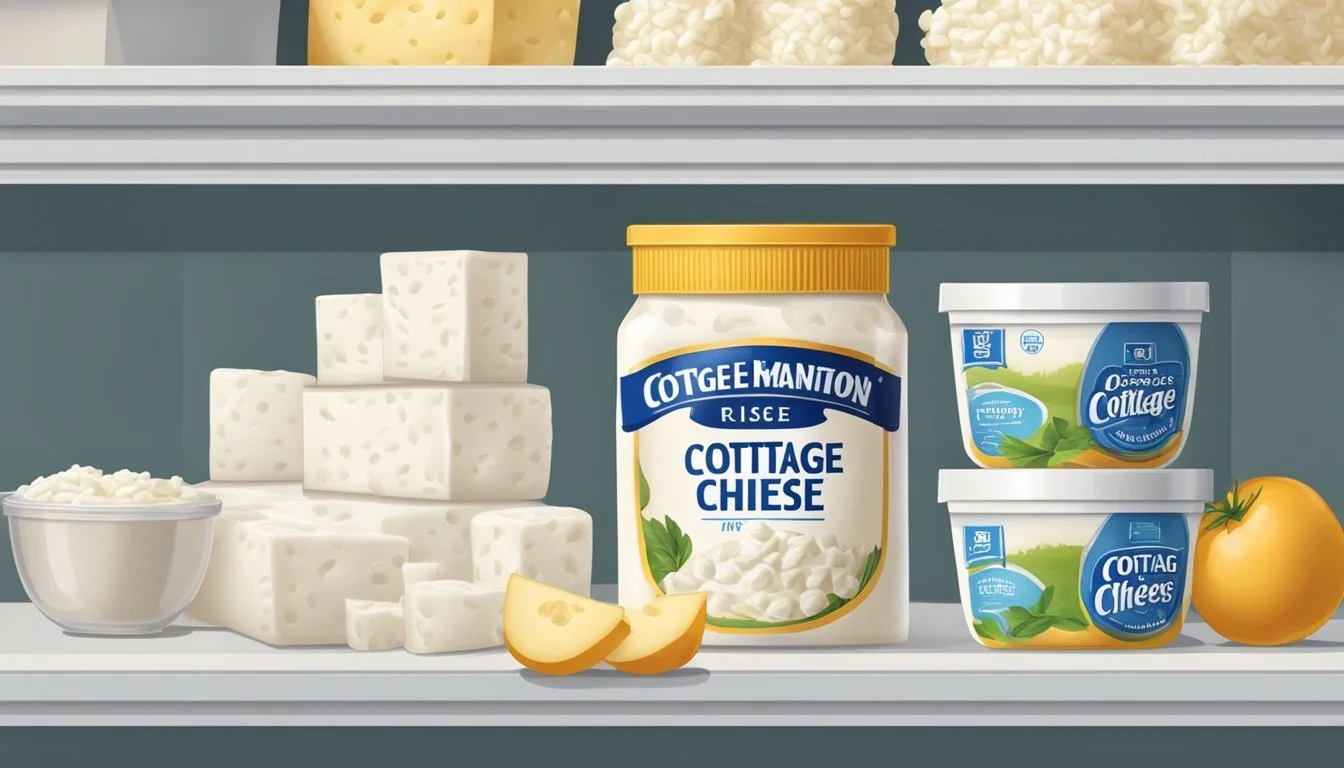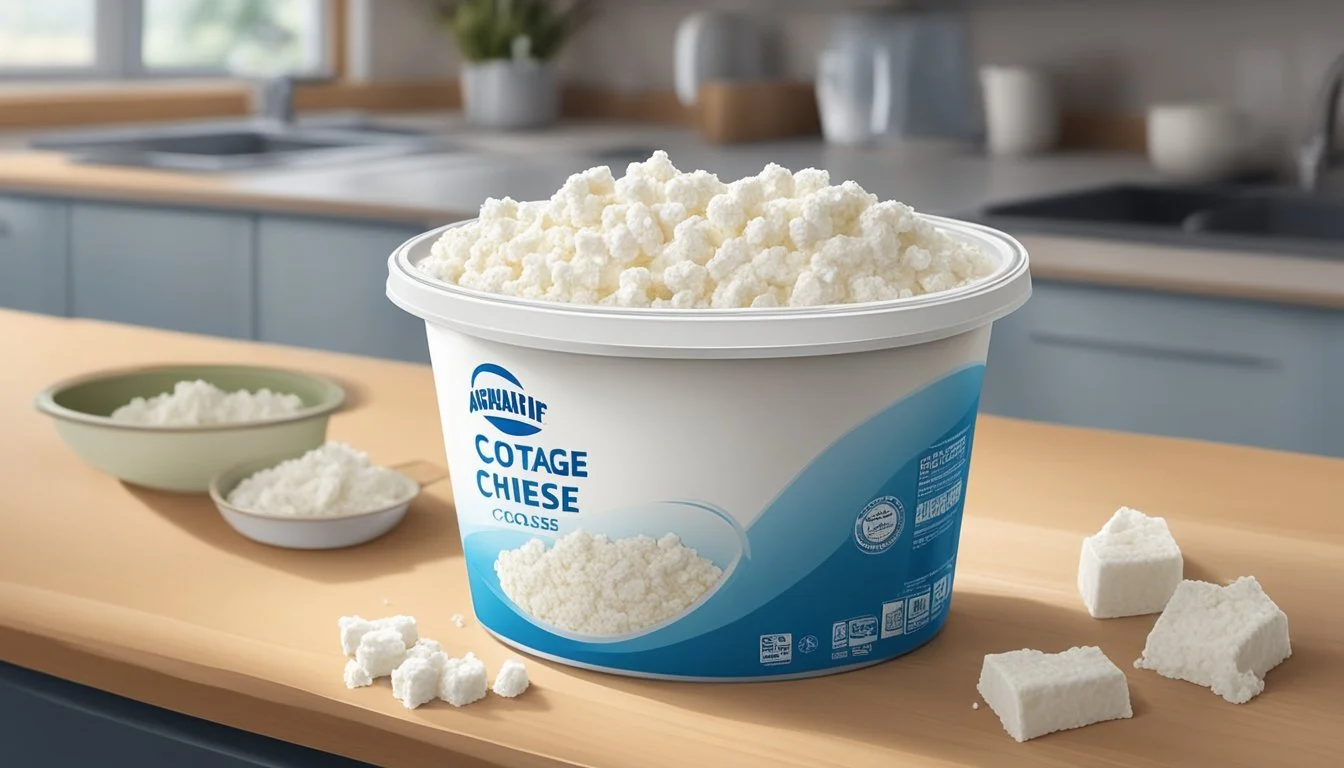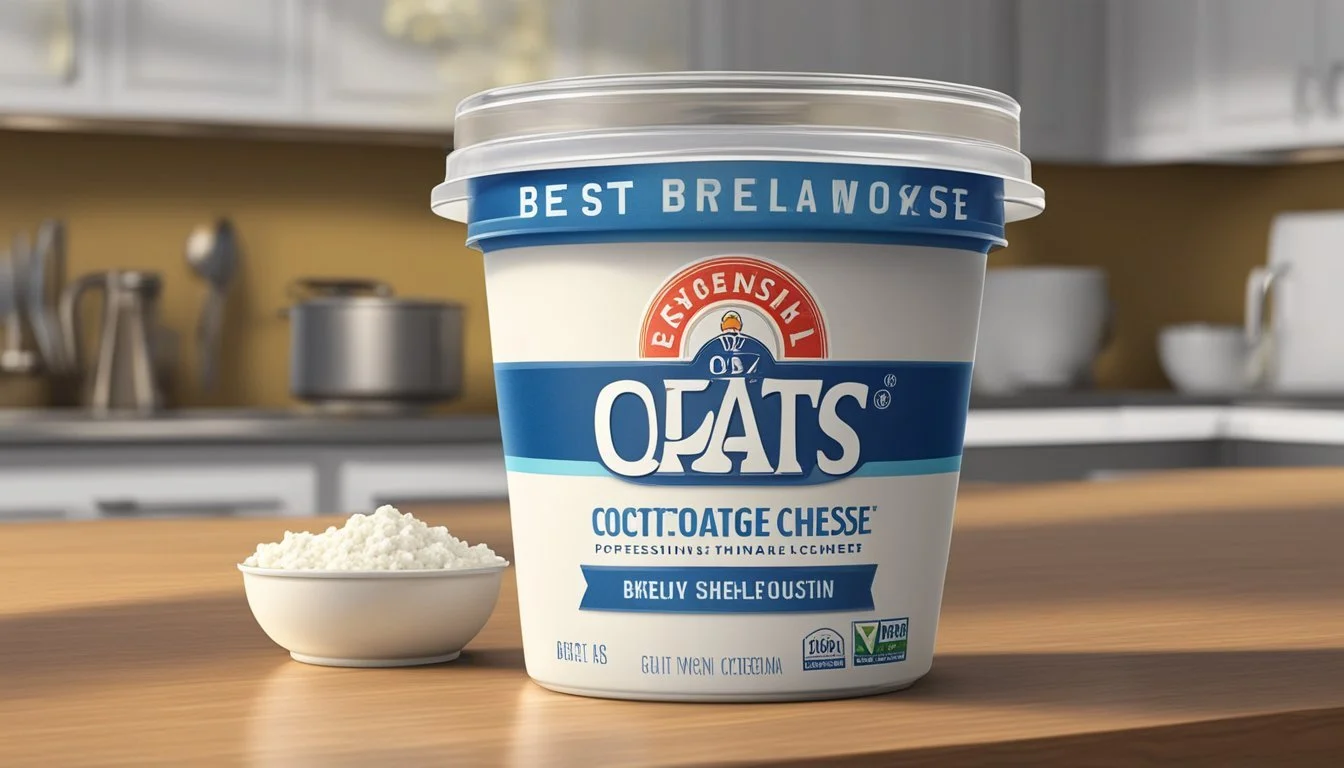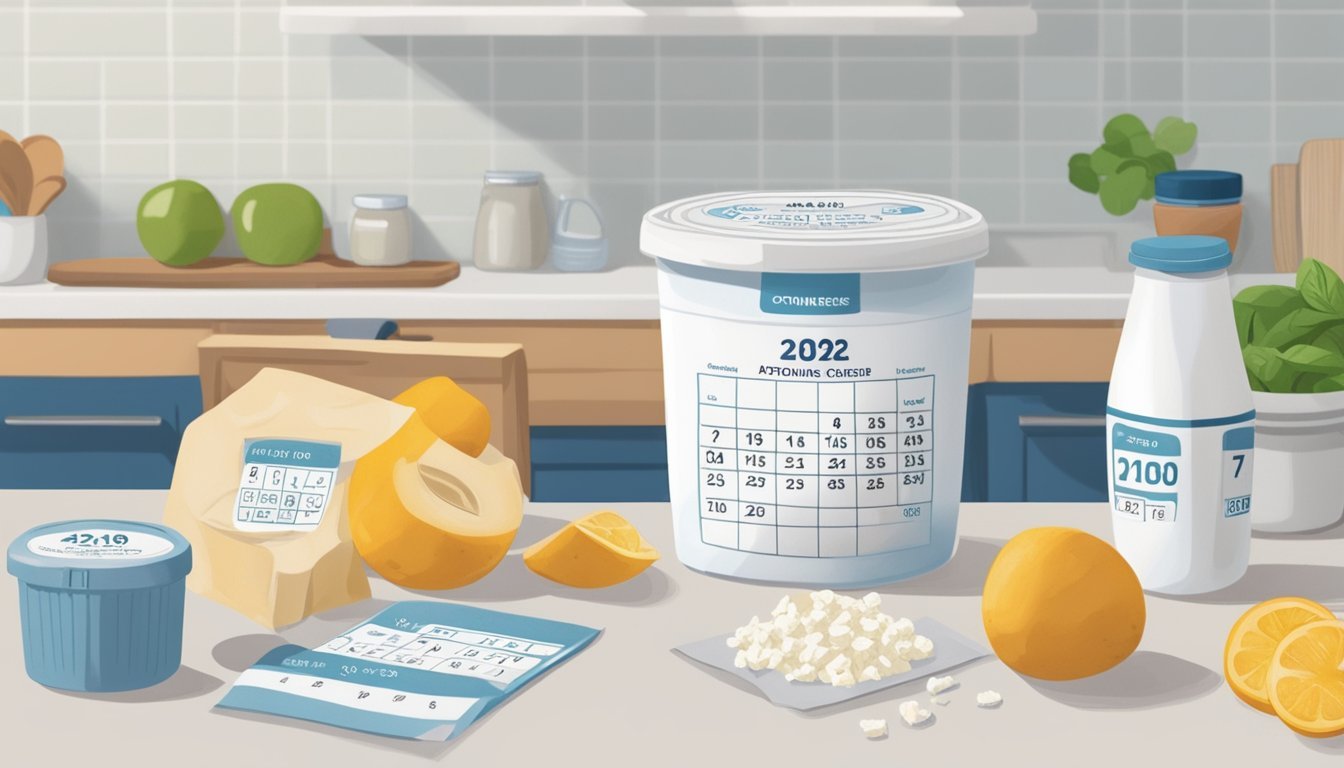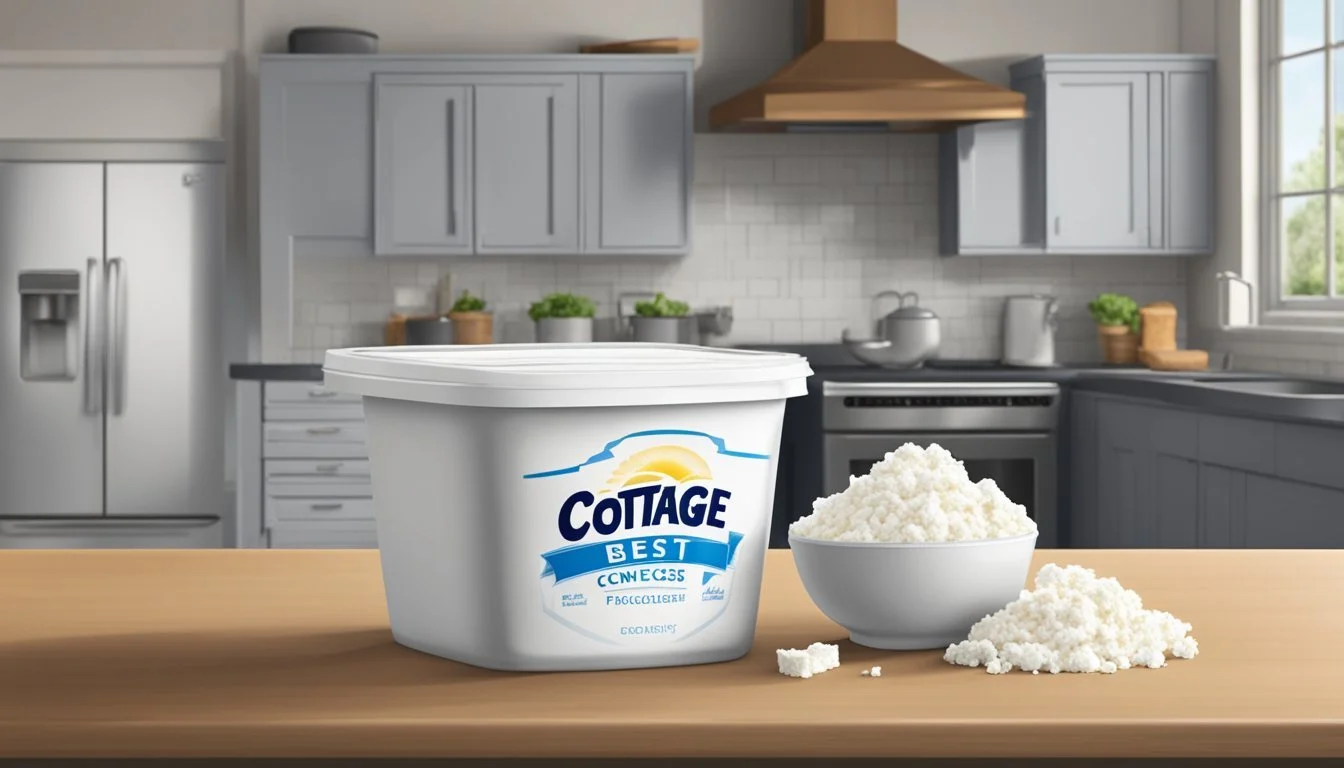How Long Does Cottage Cheese Last?
Shelf Life and Storage Tips
Cottage cheese (how long does cheese last?)is a fresh cheese (What wine goes well with cheese?) known for its creamy texture and mild flavor, making it a staple in various dishes or enjoyed as a standalone snack. Its shelf life depends on several factors, including the expiration date, storage conditions, and whether the package has been opened. Generally, cottage cheese (how long does cottage cheese last?) will last at least until the date indicated on its packaging, and potentially up to 5 to 10 days longer. However, once opened, the freshness of the cheese typically lasts for up to two weeks if stored properly in the refrigerator, with the assumption that it was initially far from its expiration date.
Storage is critical in preserving the quality and safety of cottage cheese. It should be kept in the refrigerator at a safe temperature of 40°F or lower to slow down microbial growth and maintain its quality. To extend its shelf life, one should keep cottage cheese sealed tightly in its original container or an airtight container if the original packaging is not resealable. After opening, it's advisable to consume cottage cheese within 5 to 7 days for best quality, although it can be safe to eat beyond this timeframe if there are no signs of spoilage and it has been refrigerated consistently.
Nutritional Profile and Benefits
Cottage cheese is a dairy product high in nutritional value and offers various health benefits. It is made from the curds of cow's milk and can be found in different milk fat levels such as 1%, 2%, or full fat.
Protein Content: Cottage cheese is an excellent source of protein, critical for muscle repair and growth. The protein also assists in a sense of fullness, potentially aiding with weight management.
Low-fat (1% milk fat) cottage cheese: Approximately 11 grams of protein per 3.5-ounce (100-gram) serving.
A one-cup serving of low-fat cottage cheese contains about 25 grams of protein.
Caloric Information: Cottage cheese is relatively low in calories, making it a desirable option for those monitoring their caloric intake.
3.5-ounce (100-gram) serving of 2% cottage cheese: Approximately 84 calories.
Fat Content: It contains a modest amount of fat, with lower-fat options available for those looking to reduce fat intake.
A one-cup serving of low-fat cottage cheese: Roughly 2.7 grams of total fat, with 1.4 grams of that being saturated fat.
In terms of its benefit to the diet, cottage cheese can be a versatile ingredient. It’s often included in meal plans for athletes and individuals focused on building muscle mass or dieting due to its high protein content and low calorie count. As a dairy product, it also contributes calcium for bone health, though it's lower in lactose compared to other dairy products, which can be beneficial for those with lactose sensitivities.
Understanding Cottage Cheese Shelf Life
The shelf life of cottage cheese is influenced by various factors and is delineated by different types of dates, such as sell-by or expiration dates. It can vary significantly depending on whether the container is opened or remains sealed.
Factors Affecting Shelf Life
Storage Temperature: It is critical that cottage cheese is stored in the refrigerator at a safe temperature of 40º F (4º C) or lower. Temperature fluctuations can greatly impact its longevity.
Sealed vs. Opened Container: Cottage cheese's shelf life will decrease once the container is opened. A sealed container maintains an environment that slows bacterial growth, thereby keeping the cheese fresh for a longer period.
Average Shelf Life
Unopened Container: Typically, unopened cottage cheese will last until the expiration date printed on the packaging, which can usually be extended by 5 to 10 days if stored properly in the fridge.
Opened Container: Once opened, the freshness of cottage cheese can be maintained for an average of 7 to 10 days, provided it is kept in an airtight container and refrigerated at the consistent, recommended temperature.
Condition Expected Shelf Life Unopened Expiration Date + 5-10 days Opened 7-10 days
Keep in mind that these figures are general guidelines, and one should always inspect the cottage cheese for signs of spoilage before consumption.
Identification of Spoilage
When it comes to determining whether cottage cheese has gone bad, one must pay attention to sensory changes and visible signs. These indicators can help ensure that the cheese is safe for consumption.
Sensory Spoilage Indicators
Smell: Cottage cheese should have a mild, slightly tangy scent. An off odor or particularly sour smell indicates spoilage. If the cheese emits an ammonia-like or any other bad odors, it is a clear sign that it should not be consumed.
Texture: Fresh cottage cheese has a creamy and slightly lumpy texture. If it feels slimy or excessively watery, it's an indication that the cottage cheese is spoiled.
Taste: Although tasting is not recommended if any other spoilage signs are present, an overly sour or bad taste is a direct indicator of spoilage.
Visible Signs of Spoilage
Mold: Any signs of mold or discoloration such as green, black, or pink patches are clear indicators that the cottage cheese is no longer good.
Appearance: The cottage cheese should maintain a consistent color and be free of any dark spots or colored specs. If you notice any changes in color or appearance, this likely means that the product is not safe to eat.
Safe Storage Practices
To ensure the longevity and quality of cottage cheese, adhering to proper storage methods is crucial. These practices prevent spoilage and maintain the cheese's texture and flavor.
Refrigeration Techniques
Cottage cheese should always be stored in the refrigerator at a consistent temperature below 40°F. The ideal location is on the lower shelves or towards the back of the fridge, where the temperature is most stable. Upon opening, it's essential to seal the container with a plastic lid to minimize exposure to air. If the original packaging doesn't seal adequately, transfer the cottage cheese to an airtight container.
Freezing and Thawing Tips
Although not typically recommended due to texture changes, freezing cottage cheese can extend its shelf life. To freeze, place the cottage cheese in an airtight container or wrap it tightly with aluminum foil. When ready to use, defrost the cheese in the refrigerator to maintain a more consistent texture. One should never refreeze previously frozen cottage cheese as this can compromise its quality.
Handling and Usage Tips
When it comes to cottage cheese, preserving its freshness hinges on how it is handled and used. Implementing proper food safety practices is vital to extend its shelf life and ensure it remains safe for consumption.
Preventing Contamination
One of the primary concerns in maintaining the integrity of cottage cheese is preventing contamination. Users should always use clean utensils to scoop out the cheese, avoiding any form of double-dipping, which introduces bacteria and accelerates spoilage. It's essential to practice good food safety habits, like ensuring hands are washed thoroughly before handling cottage cheese or any other food product.
Adhering to guidelines on usage and storage can also help maintain the product's quality. The cottage cheese should be kept refrigerated at or below 40º F and always sealed tightly in an airtight container if it is not in its original packaging. This minimizes exposure to air and potential contaminants. After usage, the cottage cheese should be promptly returned to the refrigerator. Any signs of spoilage, such as off odor, appearance, or taste, should signal that the cheese must no longer be consumed.
Consumption Advice
When incorporating cottage cheese into meals, consumers should be aware of its versatility and consider its optimal freshness for the best taste and safety.
Culinary Uses
Cottage cheese can be used richly across various recipes due to its mild flavor and rich texture. It pairs well with fruits such as berries, peaches, and pineapple for a healthy breakfast or snack. In the realm of sauces and soups, it can add creaminess without overwhelming other flavors. Chefs often use it to enhance the savory profile of cooked dishes, including lasagnas and casseroles.
For a simpler use, cottage cheese serves as an excellent dip when combined with herbs and spices. It's also favored in health-conscious diets for its high protein content when spooned over baked potatoes or stirred into scrambled eggs. Whether eaten alone or used as part of a larger recipe, it's crucial to ensure cottage cheese is consumed fresh, ideally within a timeframe that preserves its desired qualities.
Troubleshooting Common Issues
Maintaining the quality of cottage cheese involves addressing common issues such as whey separation and drying out. Knowledge of how to properly manage these will ensure that it remains fresh and creamy.
Dealing With Excess Whey
Cottage cheese naturally separates over time, leading to a layer of liquid whey on top. This is a normal occurrence and does not necessarily indicate spoilage. To deal with excess whey, one should:
Gently stir the whey back into the cottage cheese to restore creaminess.
If separation is frequent, drain the whey using a strainer, and consume the cheese promptly.
Excess watery separation can indicate the beginning of spoilage, so it's important to check for other signs of deterioration such as sour smell, discoloration, or mold.
Reviving Dry Cottage Cheese
When cottage cheese loses its moisture, it can become overly dry and less palatable. To revive dry cottage cheese, one can:
Add a small amount of cream or milk and mix thoroughly to bring back the creamy texture.
Transform it into a ricotta-style spread by adding lemon juice and salt, then heating the mixture to enrich its flavor and texture.
These tactics can extend the life of the cottage cheese, but they should be employed with caution. Cottage cheese should never smell sour or appear discolored, and any such signs indicate that it should be discarded.
Understanding Food Labels
When examining food labels on products like cottage cheese, one must pay attention to the date indicators which provide guidance on the freshness and potential shelf life of the product.
Deciphering Expiration Dates
An expiration date or expiry date is the point beyond which a food item like cottage cheese might not be safe to consume. This date represents a manufacturer's guarantee of peak quality and freshness.
Sell-By Date Versus Use-By Date
Sell-by dates indicate how long a store should display a product for sale. It's a guideline for the retailer, and products can still be fresh past this date. A use-by date, or sometimes shown as best before, is the last date recommended by the manufacturer for the use of the product while at peak quality. It is not a safety date, except when used on infant formula.
Cottage Cheese Variations
Cottage cheese is available in a variety of forms that differ primarily in fat content and production methods. Consumers can choose from an array of types tailored to dietary preferences or culinary needs.
Fat Content Differences
Cottage cheese is typically categorized by its fat content, which affects both its texture and flavor. The standard categories are:
Non-fat: Virtually free of fat, offering a lighter option.
Low-fat: Contains 1-2% fat, providing a balance between flavor and health consciousness.
Regular: The traditional type with around 4% milkfat, known for its creamier taste.
These variations allow individuals to select a product that aligns with their dietary restrictions or preferences on fat intake.
Artisanal Versus Commercial Types
Cottage cheese can be produced on both small and large scales, leading to differences in ingredients and processing:
Usually made in smaller batches.
May emphasize all-natural ingredients without preservatives.
Often has a more distinct, nuanced flavor compared to commercial counterparts.
Commercial types:
Produced in larger quantities for widespread distribution.
Typically contains preservatives to extend shelf life.
Uniform in taste and texture, providing consistency for consumers.
Consumers may consider artisanal varieties for a more authentic experience or choose commercial types for convenience and accessibility. Regardless of type, cottage cheese is considered a soft cheese, contrasting with hard cheeses like mozzarella and cheddar. It does not share the same characteristics as cream cheese, which is smoother, nor ricotta cheese, which is more granular, nor brie, which is a soft-ripened cheese, nor butter, which is a dairy product but not a cheese.
Health and Safety Considerations
When it comes to dairy products like cottage cheese, understanding health and safety is crucial. Freshness, proper storage, and awareness of allergies and intolerances can prevent foodborne illnesses.
Allergies and Intolerances
Cottage cheese, being a dairy product, contains lactose and milk proteins, which can cause allergic reactions in some individuals. Lactose intolerance can result in gastrointestinal symptoms, while an allergy to milk can trigger immune responses ranging from mild to life-threatening. Consumers should check for clear labeling to avoid such adverse reactions.
Risks of Consuming Spoiled Dairy
Consuming spoiled dairy, including cottage cheese, can lead to food poisoning as harmful bacteria can develop in these perishable foods. Symptoms may include nausea, vomiting, diarrhea, and abdominal pain. It is vital to identify spoilage signs such as:
Off smell: Sour or unpleasant odors.
Discoloration: Yellowing or development of green spots.
Texture changes: Unusual sliminess or liquid separation.
Guidelines From Health Authorities
The Department of Health and Human Services provides specific guidelines to prevent bacterial growth and food poisoning:
Correct Storage: Keep cottage cheese refrigerated at 40º F or lower.
Timely Consumption: Consume within one week of opening and by the sell-by date if unopened.
Handling: Always transfer to an airtight container if the original package is damaged.
Adhering to these directives helps ensure the safety and quality of dairy products, minimizing health risks.
Cottage Cheese in Special Diets
Cottage cheese is a versatile food that adapts well to various dietary needs, offering essential nutrients such as protein while accommodating special diets with its low-fat and lactose-free versions.
Keto and Low-Carb Options
In a ketogenic (keto) or low-carbohydrate diet, individuals focus on high-protein and high-fat foods while minimizing carb intake. Cottage cheese can be a suitable option due to its high protein content, which is approximately 28 grams per cup. To align with low-carb principles, one should opt for full-fat cottage cheese since it provides a lower carb count and is rich in healthy fats, which is crucial for inducing ketosis. In terms of calories, full-fat versions are higher in calories due to increased fat content, but are effective in promoting satiety and providing sustained energy within these dietary frameworks.
Lactose-Free and Dairy Alternatives
For individuals who are lactose intolerant or elect to follow dairy-free diets, lactose-free cottage cheese products are available on the market. These products provide the similar protein benefits of conventional cottage cheese but without the discomfort of lactose. They typically contain comparable amounts of protein and calories. In addition, dairy-free alternatives made from soy, almonds, or cashews are also offered. Although the textures and flavors may vary from traditional cottage cheese, these alternatives often mimic its nutritional profile by fortifying with additional protein. However, potential consumers should be attentive to the ingredient lists, as some alternatives may contain added sugars or fats to enhance taste and consistency.

